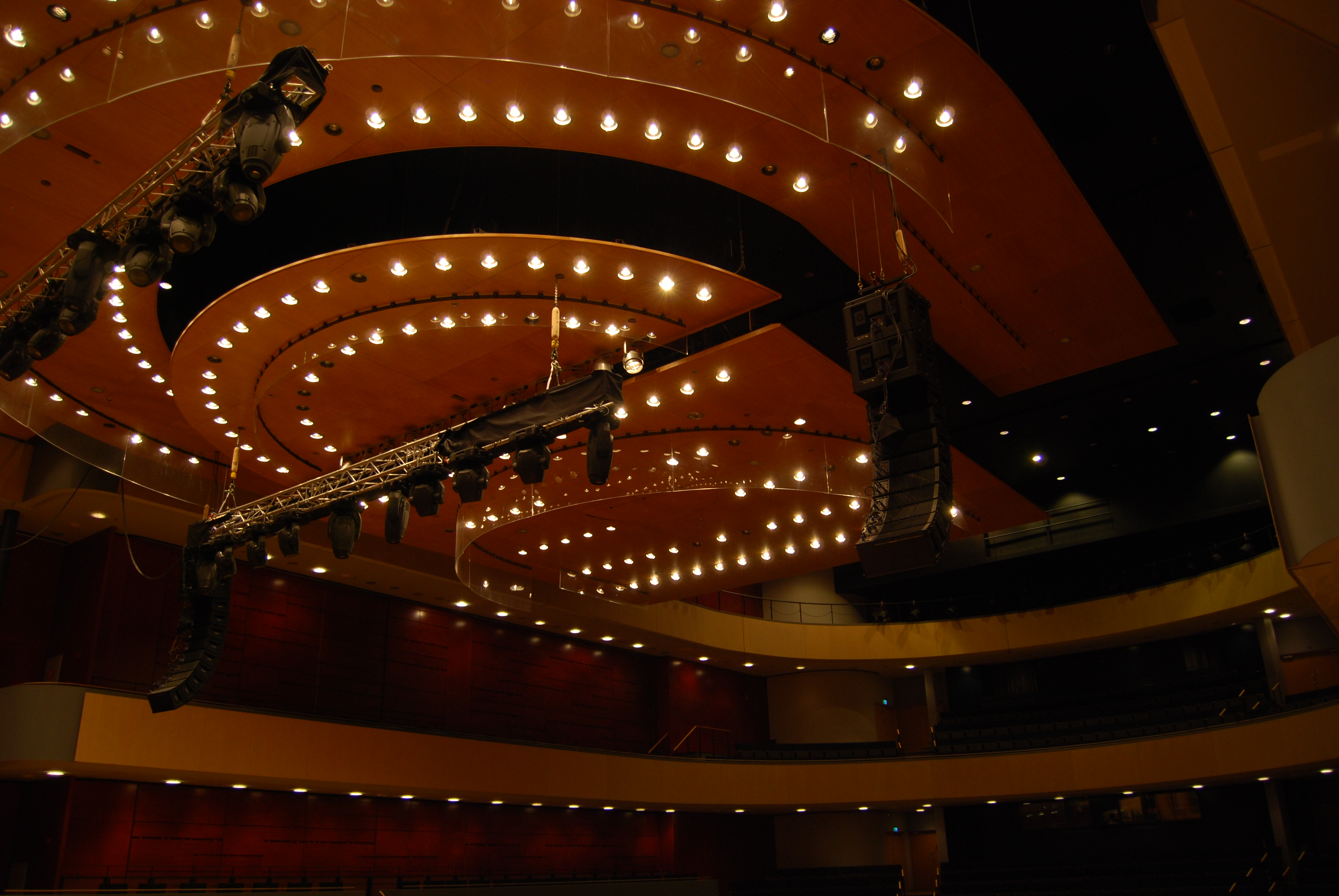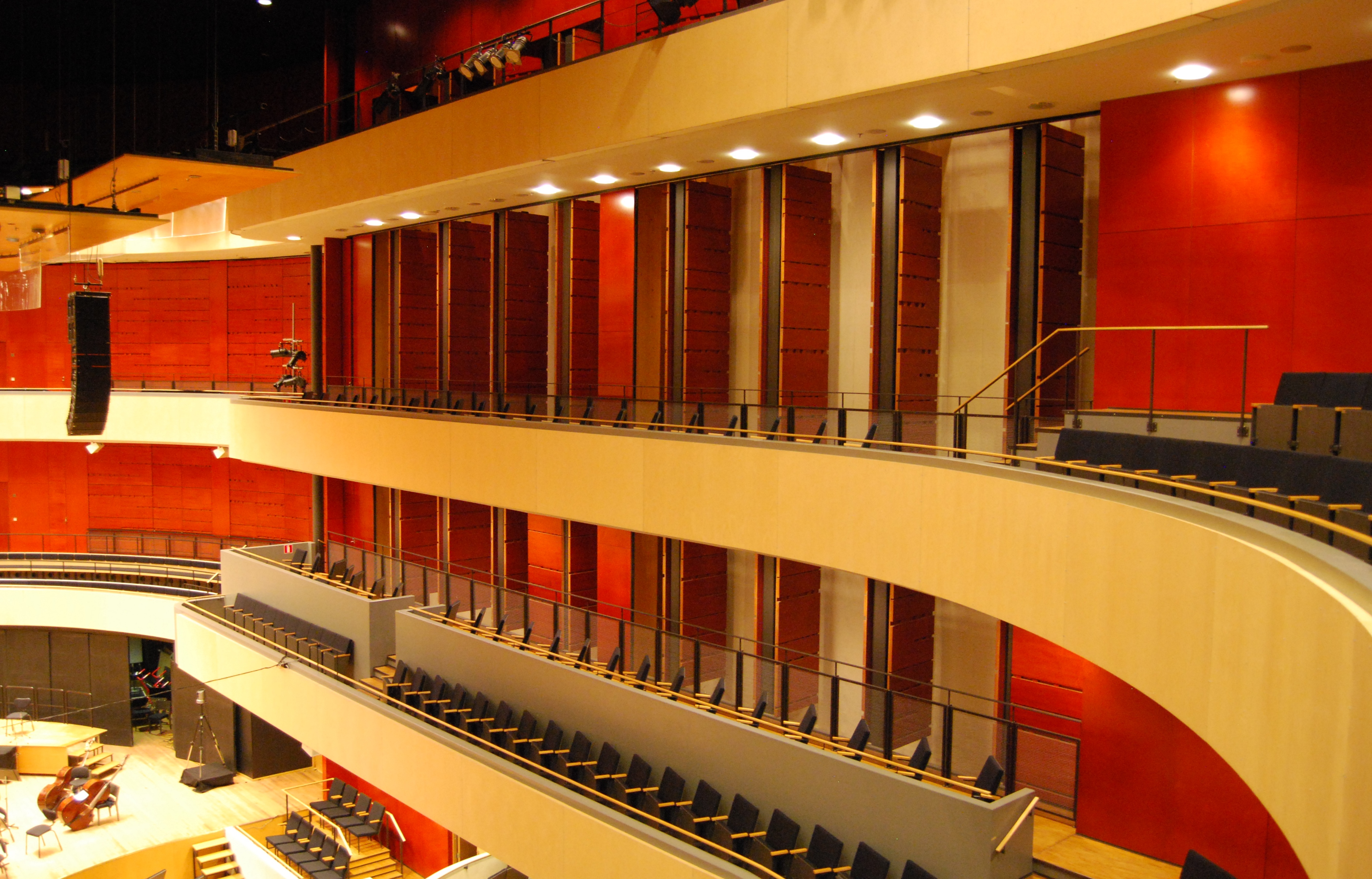Adjusting the acoustics - Bassic Instinct
Adjusting the acoustics
The actual challenge in fine tuning of the Sibelius Hall was the acoustic diminishing of the large orchestral hall for the purposes of a septet and two different quintets.
The hall has 188 acoustic doors divided on three levels. The majority of the doors are on the side walls, and about one fifth inbehind the stage on both sides of the organ facade. Outside the inner side walls of the hall, there are echo chambers the full height of the hall. Just outside the acoustic doors there are adjustable, full height woolen banners for controlling the echo in the chambers.
Above the stage, there is a reflecting canopy, which can be adjusted height-wise in four independent parts. Hanging down from the canopy are two parallel curved lines of plexiglass reflectors about half a meter deep for giving controlling "cat's-eye" reflections. The canopy settings together with the early side reflections also play a major role in blending the ensemble sound.
During the rehearsal, acoustician Henrik Möller opened together 40 of the acoustic doors on both sides of the hall towards the back and behind the stage. He also lowered the curtains behind the doors to their full length. All of this was done in order to shorten the reverberation time (from about 2.5 to less than 2 seconds), thereby increasing the intimacy.
For optimal control reflections on the stage and for good projection to the parterre, the canopy was lowered about 1.5 meters from its full orchestra adjustments, approximately down to the level of the bottom of the second balcony. Due to these adjustments, the audience was to be seated only in the parterre.
Onstage the ensembles were placed in half circles in rather front, around the oval grand piano lift. The double bass was in the middle, in practice at the spot where the conductor normally stands. The table of the bass was squarely facing the audience, because even if the overall sound of double bass is not especially direction-specific the sound attack of the instrument is.
Septet seating:


Canopy

Acoustic doors open and curtains fully down
The hall, albeit so familiar, feels and seems big - too big for these ensembles. While we concentrate on putting Beethoven together, acoustician Möller seems to hover above the acoustic control table and jump around the hall.
I feel and hear the whole ensemble well, but don't seem to get perfect grip of the ring of the bigger chords, the power vanishes – until - in the middle of the Variazioni movement the overtone ring suddenly sprinkles from above like pixie dust! What did you do Mr. Möller? – Just lowered the canopy – well, like for a meter!
